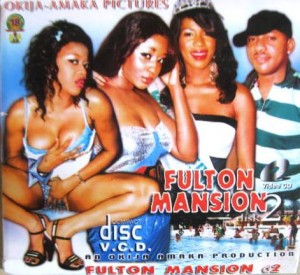The Allure of Black-and-White Cinema: A Recent Resurgence
by Maria Cherfaoui | October 18, 2023
The Allure of Black-and-White Cinema: A Recent Resurgence
Can embracing technological limitations bring us closer to our objectives in making art? Is engaging with the flaws of an artist’s medium the best way for them to transcend that medium? The filmmakers of today who are still working in black-and-white think so. Since colour film debuted in 1908 with A Visit to the Seaside, […]
by Maria Cherfaoui
October 18, 2023

Can embracing technological limitations bring us closer to our objectives in making art? Is engaging with the flaws of an artist’s medium the best way for them to transcend that medium? The filmmakers of today who are still working in black-and-white think so. Since colour film debuted in 1908 with A Visit to the Seaside, and, moreover, since shooting in colour became inexpensive in the late 60s, the directorial decision to shoot in black-and-white has gained significance. In recent years, we have seen a fascinating growth in the choice.
With AI acting on the horizon, film being bound to monochrome might seem impossible to envision, and perhaps the trailblazing developers of colour television would muse at today’s quiet black-and-white Indie films. Still, it seems no matter how far technology progresses, the allure of black-and-white cinema and its associated aesthetics persist.
I really began to reflect on the effect of black-and-white film when I stumbled upon a version of Pontecervo’s The Battle of Algiers (1966) which had been recoloured. From hand painting objects to digitally tinting landscapes, colourisation in studios is extremely common, and often phenomenally achieved, as was the case with this film. But despite the film’s unshakably harrowing events, it seemed to me to shed some of its poignancy, to dilute some of its dense substance, as though accommodating to an audience too distant from its point of origin. Indeed, the monochrome masterpieces of the past have nothing to apologise or compensate for.
Spielberg’s Schindler’s List (1993), one of the most pertinent films to be shot in black-and-white after the rise of mainstream colour, celebrates its twentieth anniversary this year. The cinematographer, Janusz Kamiński, sought to create a sense of timelessness, and aptly returned to the palette of the earliest cinema to do so. Foregoing colour as a call to anachronism has remained in the face of colour television. More recently, Sinha’s Bheed (2023) makes use of black-and-white to draw parallels between the social disparity caused by the pandemic in India and the divisive events of the 1947 partition. Here, all while the action is unfolding, the present political moment is visually diluted and temporally enriched, asserting its inextricable connection with its historical context.

The monochrome experience, though, extends beyond its link to the past. As though it was not enticing enough, Oscar-winner Parasite (2019), becomes a misty, dreamlike evocation of suspense in its black-and-white cut. Indeed, greyscale is stylish, classy, an easy way to feel avant-garde, and it would not be difficult to argue that this was Bong-Joon-Ho’s central consideration for the cut, especially given that it was not the original. The atmospheric transformation was successful, but it is clear from some of the frames that depth and clarity was lost in the transition from colour. In the preceding year however, we saw an absolute faith in black-and-white with Roma (2018). Cuarón details the way in which the set was designed and coloured in accordance with the pellucid, monochromatic lens. No colour was allowed on set in order to inspire a black-and-white mentality in actors, something which comes across in the harmonious intimacy created when the camera captures the scenery. The decision thus, to film in black-and-white, cannot be taken as a supplementary aesthetic. It is a commitment weaved into the foundations of the drama.

It brings to mind Kassovitz’ decision to film La Haine (1995) in black-and-white, thematically framing the film. The bleak devastation of suburban Paris remains unequalled, and there is a sense of inescapability, an access to the privileged and colourful metropolis of Paris that the protagonists are barred from. In a similar vein, Malcolm and Marie (2021) is a careful, sultry documentation of deplorable communication and strained relationships. Escalation, quelling, and deflection meet one another in the elegant but frustrating black-and-white frame, mimetic of both the polarised dialogue and the inability to escape their conflict and reach reconciliation.

And of course, Oppenheimer (2023) featured black-and white-scenes, about which Nolan has flatly said, “The colour scenes are subjective; the black-and-white scenes are objective.” By contrast, neuroscientists Michael Bannert and Andreas Bartels investigated colour perception in 2017 by showing subjects black-and-white stimuli. The result, as with most investigations of the sort, is that the mere sight of black-and-white photos automatically elicited brain activity patterns that specifically encoded colours. The black-and-white film is arguably more stimulating than the coloured one.
What does it mean to put aside the abundant resources available to the filmmaker today and opt for the earliest form of cinema? What our unshakeable attachment to black-and-white perhaps reminds us is that developments in technology do not translate to an abandonment of older forms we love. Somebody once told me that black-and-white is only favoured because it’s cheaper. A grayscale lens is perceived as classy, a shortcut to artistic flare. Notwithstanding, it remains transformative and worth inspecting. Black-and-white shifts the visual and emotive experience in a way to which we continue to be drawn.∎
Words by Maria Cherfaoui.




